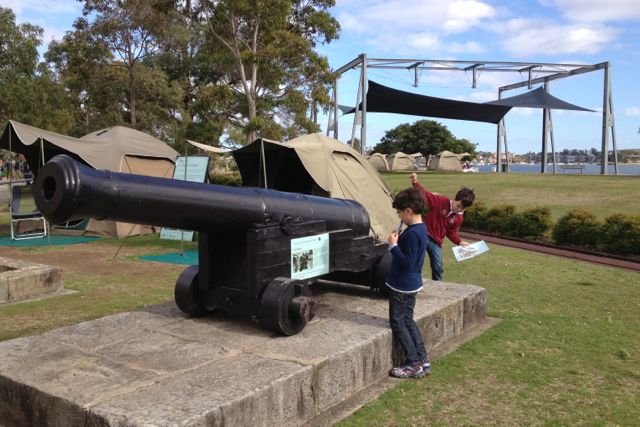The irony of spending time away from my family to write this post about increasing communication at home isn’t lost on me. Nor is the truth about how hard it is to do this stuff in practice!
I suspect our family is fairly typical for Sydney. Both parents work, juggling child-minding with help from family. Kids at different schools, with different sports and other activities. Homework. Volunteer work. Kids’ friends’ birthdays every second weekend – sometimes more than one. Visiting grandparents whenever we can. Weekends eaten up with chores we couldn’t squeeze into the week. Criss-crossing Sydney, always stuck in traffic. Always en route to or from somewhere.
Every now and then, when we discover a magical gap in our schedule, all we want to do is come home, switch on the TV, distract the kids with iPads and do nothing at all. Now, once in while, that’s perfectly fine. But, too often, too easily, that once in a while becomes the norm, and we stop talking to each other about anything other than ‘disciplinary matters’ and the logistics of the next event in our overstuffed-calendar.
Why does it matter?
As we’ve previously said, children are hard-wired to learn language. They don’t need flashcards, educational apps or expensive training systems, and they don’t learn language efficiently from passively watching screens. Instead, the key in how children learn to talk is obvious, free and simple: talking with them. Conversation.
Talk contributes not just to language development, but to children’s expanding knowledge of the world and their willingness to talk to others. Studies show that children exposed to fewer words, and a higher percentage of negative statements (e.g. “No. Don’t do that, Stop that!”), tend to have lower vocabularies and IQ scores (e.g. Hart & Risely, 1999). In other words, the amount and quality of talking with your kids can have lasting impact on children’s language development – especially during their first three years when they are most dependent on you doing most of the conversational heavy-lifting.
So how can we do it in the real world?
Here are 8 ideas to kindle or rekindle real communication with your family. None is rocket science. But they all take conscious thought and commitment to pull off:
1. Eat together: even if it’s just for 20 minutes and not every day. Make it a priority. Turn off your TV, phones and other devices. Talk about daily events, share ups and downs. Take it in turns. Ask specific questions, not simply “how was your day today?”. Studies show that families who eat together as a family have children who have fewer problems when those teenage years hit.
2. Host a monthly family games night: take it in turns to choose the board game. Start with all those games you’ve received for kids’ birthdays and never used.
3. Set a weekly reading night: turn off the TV, turn on some music (traditional jazz is a big hit in my family), get everyone to sit in a room together (any room will do) and read anything they want for pleasure. Paper books only. No school texts or academic papers allowed. Leave plenty of time to discuss what you’ve read and learned.
4. Choose a walk morning/night: take advantage of daylight saving to explore your local neighbourhood. Take in the sights, sounds, smells, and textures all around you. Discuss anything and everything – bugs, rocks, leaves, flowers, overgrown hedges, unpainted fences, poorly-crafted graffiti, roadworks, and whether Mrs Carruthers down the road is a witch or just misunderstood.
5. Family membership: whether it’s a local footy club or the Australian Symphony Orchestra, subscribe to something that will get you all out and about at least a few times a year.
6. Public transport day: choose a day a month – we always go for Sunday – and catch a train, bus and/or ferry to somewhere you’ve never been before. Don’t over-research it. Just go somewhere, then look around.

7. Family project: now, before you roll your eyes, it doesn’t have to be lame. Nor does it have to be expensive. Design and plant a new garden bed. Cook a meal – everyone contributing ingredients. Corral all those thousands of digital photos on your phones into a personal website or an album-gift for the relatives.
8. Kids’ choice play: as a Hanen-certified speech pathologist, I would be remiss if I didn’t recommend getting down on the floor to the kids’ eye level and following their lead as they choose and play a game of their choice. Following a child’s lead is a powerful way to help him or her initiate interactions; and children are more likely to learn language talking about things of interest to them. Allow your children free play time – not everything has to have an educational purpose.
Principal source: Hirsh-Pasek, K. & Golinkoff, R.M., with Eyer, D (2003). Einstein Never Used Flash Cards: how our children really learn – and why they need to play more and memorise less. Rodale, New York, New York.
Related articles:
- Defrazzling update: practising what we preach
- Defrazzling: Family Project Time: The Local Council Pick-Up
- Defrazzle: Stuck in a rut? Do something random!
- Defrazzle: Ironfest (huzzah!)
- Defrazzle time to improve your child’s behaviour and language skills
- Speech pathology homework doesn’t have to be boring

Hi there, I’m David Kinnane.
Principal Speech Pathologist, Banter Speech & Language
Our talented team of certified practising speech pathologists provide unhurried, personalised and evidence-based speech pathology care to children and adults in the Inner West of Sydney and beyond, both in our clinic and via telehealth.

Leave a Reply